The Academy of Motion Picture Arts and Science has revealed the names of the 683 filmmakers and craftspeople it is inviting to join its ranks. Forty-one percent of the enormous new class is comprised of people of color, bumping the overall academy from 8% to 11% people of color. After the #OscarsSoWhite controversy, Academy president Cheryl Boone Isaacs said she was committed to doubling the number of woman and minority members who can vote for the Oscars — an ambitious goal by any measure.
- Share via
Why the academy’s focus on international writers and directors matters
At least a few of the writers and directors recently invited to join the Academy of Motion Picture Arts and Sciences’ remarkably wide-ranging class of 2016 seemed like solid bets beforehand. I doubt that many were surprised by the invitations for Lenny Abrahamson and Adam McKay, both recent Oscar nominees for directing “Room” and “The Big Short,” respectively, or Ryan Coogler, whose overlooked work on “Creed” was cited repeatedly in the coverage of #OscarsSoWhite. Nor was it startling to see the inclusions of Phyllis Nagy, a screenplay nominee for “Carol,” or László Nemes, the Hungarian director of the recent foreign-language film winner “Son of Saul.”
What was surprising was the sheer number of filmmakers who were included despite never having been shortlisted for an Oscar, and who, to their credit, have never seemed particularly motivated by the desire to win one. For cinephiles the world over, to read those lists was to be confronted by a startlingly inclusive who’s who of global cinema — and to experience a sense of delight that grew and grew as the genuinely impressive reach of the academy’s undertaking came into focus.
- Share via
5 burning questions raised by the largest academy invitee class
The Academy of Motion Picture Arts and Sciences added 683 new members Wednesday, more than doubling last year’s record number of invitees. The dramatic action spurred many questions. Here are answers to five of them.
How does the academy notify invitees? I saw a bunch of people say that they found out on Twitter.
That was indeed the case with producer Mynette Louie and documentary filmmaker Dawn Porter.
The academy emailed the 683 prospective members prior to Wednesday’s announcement, using the contact information provided on the application. Sometimes that info isn’t a personal account, but an email address for an agent, manager or publicist. Sometimes people don’t check their email. Call it one of life’s better surprises.
Some of these invitees have pretty thin resumes. Don’t you need more credits to get into the academy?
Each of the academy’s 17 branches has specific requirements to become a member. Oscar nominees receive prime consideration, though they aren’t automatically admitted. (We still have no idea why “Babel” nominee Rinko Kikuchi hasn’t been invited to the party yet.)
Beyond the minimum requirements, most branches have a provision that allows them to invite anyone they damn well please. If they have “achieved unique distinction, earned special merit or made an outstanding contribution” in their field, in the opinion of the branch’s executive committee, they’re in.
- Share via
NAACP gives a thumbs up to the academy’s new class: ‘The “O” in Oscar should stand for Opportunity’
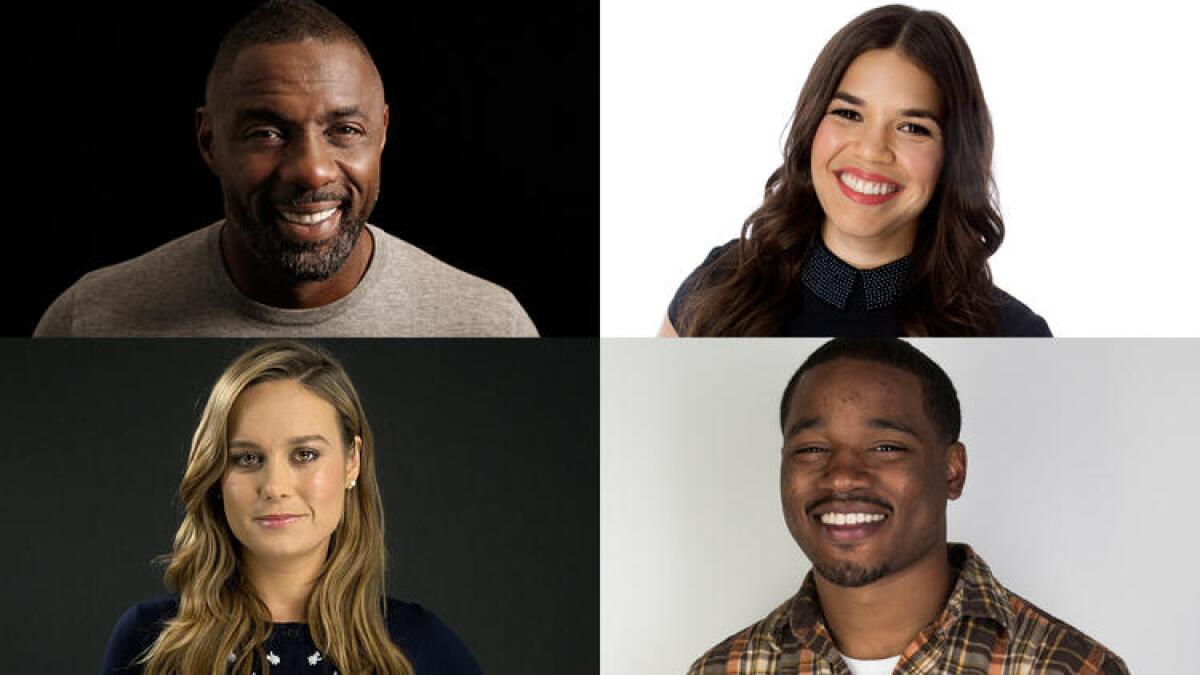
After inviting its most inclusive class of new members ever, the Academy of Motion Picture Arts and Sciences has received an endorsement from one key advocacy group: the National Assn. for the Advancement of Colored People.
NAACP national board of directors Chairman Roslyn M. Brock issued a statement Friday commending the academy on its commitment to diversity among the 683 potential new members invited to join the industry group this week, and calling for more action. According to the academy, 46% of the invitees are female, and 41% are people of color.
“The progress that is being made by AMPAS is certainly going in a very positive direction with more that can be done,” Brock’s statement said. “In that regard, the NAACP has ideas that we believe could further enhance what you are currently doing. We would welcome the opportunity to share our ideas with you. We believe the NAACP and AMPAS can play an important and lasting leadership role in making your overall initiative a model for the entertainment industry.”
- Share via
‘Straight Outta Compton’ and five other Oscar snubs a more diverse academy might have avoided
Time machines exist in many realms, but unfortunately the Hollywood awards show isn’t one of them. (If it were, perhaps Seth MacFarlane’s Oscars opening number might have gone differently.)
Still, it’s tempting to wonder how the Oscars might have looked if the motion picture academy’s recent push for diversity — which on Wednesday resulted in 683 new invitees, highs for both African Americans and women – had happened earlier. We’re not talking at the dawn of the civil rights movement, either — just, say, in 2012, after The Times published its landmark report that found the academy was overwhelmingly white and male.
Would the last two years have seen a person of color in any one of its 40 acting nominations? Would the number of female-won best directing awards have been higher than one? And would Latino actors have won more than a single Oscar since the Eisenhower administration?
There were, of course, worthy candidates in many of these overlooked years. But like Satchel Paige and other great Negro Leaguers unlucky enough to play before baseball integration, these entertainers had the misfortune of turning in great work just a little too early. Had the academy changed its ways just a little sooner, all could have been different. (Of course, if some of these people had gotten nominated we might not have had the #OscarsSoWhite movement in the first place, so their sacrifice wasn’t entirely in vain, though that may be cold comfort to them.)
- Share via
What the academy’s new diverse class will mean for Oscar voting — will it change anything?
It’s a first step. And an exceptional one, provided it’s not the only one.
Moving to broaden its ranks by inviting 683 people to join as members, nearly half of them women and 41% of them people of color, the film academy has made good on its promise to create, over the next four years, a substantially different, more inclusive institution.
This initial, historic stride might already be enough in itself to shake up next year’s Oscars. A potential 10% membership boost — from 6,261 voting members to nearly 7,000 — couldn’t help but have some effect.
The depth of that effect, though, is open to question. It’s important to remember that even with this enormous class, the academy remains overwhelmingly white (89%) and male (73%). The needle barely moved for women and people of color.
“I don’t think this change alone will make that much difference at the Oscars this year,” said Darnell Hunt, professor of sociology and director of the Ralph J. Bunche Center for African American Studies at UCLA.
- Share via
Jesse Williams and the academy just changed Hollywood’s race conversation. What’s next?
The last week has been a watershed one for race and Hollywood.
The motion picture academy, responding to the outcry over an absence of minorities in its ranks — and consequently its nominees — invited nearly 700 film professionals to become members. It’s by far the academy’s biggest new class, with more than 40% of the invitees people of color.
Three days earlier, at the BET Awards, “Grey’s Anatomy” star Jesse Williams unleashed a powerful, often frustrated, speech about an imbalance of power.
“We’ve been floating this country on credit for centuries,” he said. “And we’re done watching and waiting while this invention called whiteness uses and abuses us ... extracting our culture, our dollars, our entertainment, like oil, black gold.”
There was a yin-and-yang quality to these two events: a fiery young actor issuing a call for justice and a staid establishment making a welcome, but undeniably low-key and belated, attempt at change. Together they represent not just the urgency of the issue of African American inequity but the range of responses to it: voluble and quiet, sweeping and surgical, upstart and within the system.
- Share via
Academy member details selection process
The academy branch committees that vote on new members approached their task slightly differently this year in the wake of the #OscarsSoWhite outcry.
One prominent academy member who spoke to The Times on condition of anonymity because the person was not authorized to discuss Academy of Motion Picture Arts and Sciences issues said at their meeting some of the usual discussions about applicants were this year differentiated by a committee member noting a candidate’s minority status.
The debate at the level of committees — which vote on acceptance — is not unlike that of a college-admissions board deciding on an incoming class. And though the academy member said that race, ethnicity, gender and sexuality were far from the sole factors in evaluating a candidate, they could be a determining one. An applicant’s minority status did, in a few cases, tip the scales in favor of acceptance, the member said.
Proactive recruitment was also on the minds of academy members, as the number of applications was significantly up in multiple branches. In some cases committee members in the room also suggested, and approved, the names of people who did not apply.
Incidentally, the college-admissions analogy is apt in other ways. Rejected candidates get a terse email saying that an invitation cannot be extended to them. That can get a little sticky, prompting a rash of what-happened hand-wringing directed by the applicant to the person who nominated them. In academy voting, as in life, no good deed goes unpunished.
- Share via
L.A. Times scorecard: How many of our recommendations made it on the academy’s invitee list?
Earlier this month, in an effort to assist the academy in accomplishing its daunting goal, the Los Angeles Times released its own list, Our Diverse 100, of women, people of color and members of the LGBT community who we felt could help solve the academy’s, and broader Hollywood’s, diversity problem. Readers also offered up their suggestions and the disability community staked its space in the conversation as well.
So, how did we do? Of our 100 suggestions, 36 were invited to be members. If we were in the Major Leagues, we’d be batting .360 — which isn’t too bad at all.
- Share via
#OscarsSoWhite’s April Reign: ‘Work still must be done’
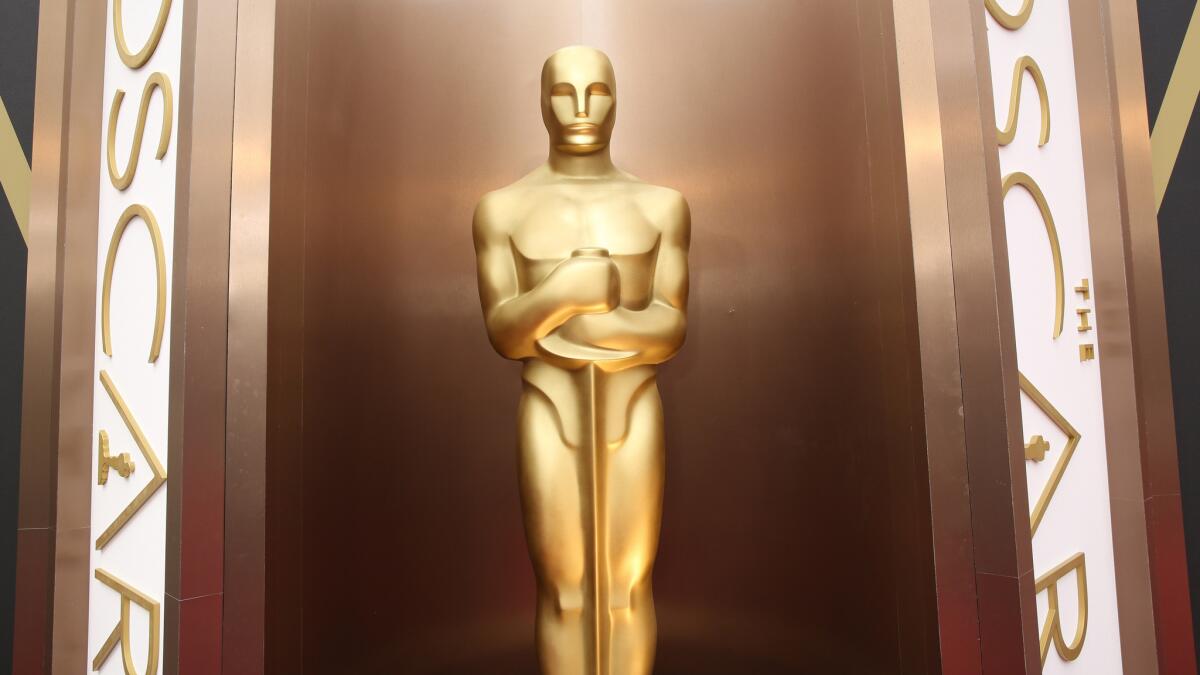
The Hollywood buzzword of the moment has been “diversity,” thanks in large part to the hashtag #OscarsSoWhite and its creator April Reign. The former attorney and managing editor of BroadwayBlack.com first began using the hashtag on Twitter following the 2015 announcement of an all-white slate of acting Oscar nominees, and again when the same occurred earlier this year. When the likes of Spike Lee and Jada Pinkett Smith indirectly joined the #OscarsSoWhite movement, the Academy of Motion Picture Arts and Science was prompted to react, making a commitment to diversify its ranks by doubling the number of women and people of color by 2020. Wednesday became the first chance for the organization to work toward its goal with the release of their latest list of invitees, and it’s the largest and most diverse class to date.
Moments after the reveal, Reign spoke with The Times via phone about the list and the future of the movement.
- Share via
Here are the 683 people who were invited to join the film academy today
- Share via
More reactions from new film academy invitees
- Share via
New film academy invitee Arab-German director Lexi Alexander: ‘I cried a few tears’

Oscar-nominated director Lexi Alexander was emotional after learning of her invitation to join the academy
The Arab-German filmmaker was nominated in 2003 for her live-action short film “Johnny Flynton,” which centers around a small-town boxer and a tragic set of events after an exhibition fight.
“After being an Oscar nominee 13 years ago... I’m so pleased to be invited,” Alexander told The Times. “I’m especially happy to be part of such a diverse group. I actually want to hang out and watch movies with most of the people on this list.
“To be honest, I cried a few tears when I started to get congratulation tweets in Arabic. Although I’m aware of how under-represented we are, I sometimes forget how desperately Arabs who aren’t in the film business wish for better stories about us.”
- Share via
The Academy invitees share their reaction to the news
- Share via
Academy invitee Jorge Gutierrez on sharing the news with his mother
- Share via
Why the film academy’s huge new diverse class doesn’t make it much more statistically diverse
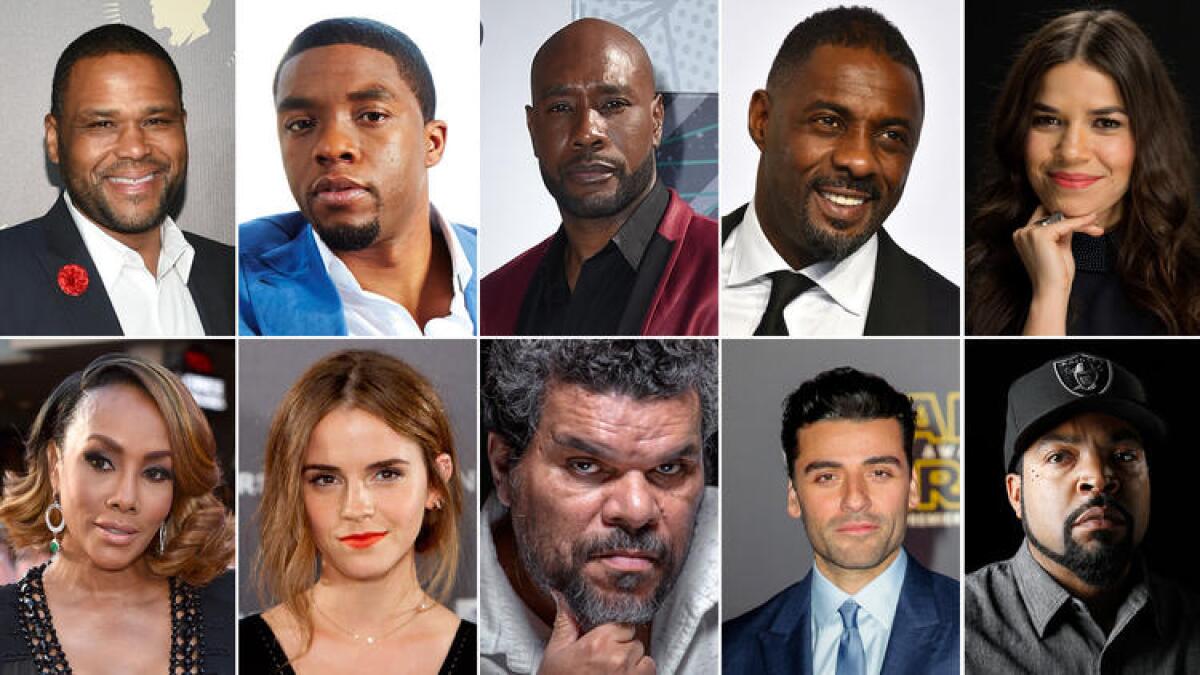
The Academy of Motion Picture Arts and Sciences made a huge new push this year to admit hundreds more members than last year as part of an effort to diversify the Oscars voting pool. The results: According to the academy’s figures, the new class is 46% female and 41% of the invitees are people of color.
But that only brings the representation of women in the organization from 25% to 27% and minorities’ share of total academy membership from 8% to 11%.
Here’s why: In 2012, The Times reported, Oscar voters were 94% white and 77% male, and by this year those numbers had budged only slightly.
In order to achieve its stated diversity goals, the academy would have to invite at least 375 women and more than 130 people of color each year for the next four years, The Times estimated earlier this year.
Some have wondered whether those goals can be achieved without lowering membership requirements, which the academy has said it will not do.
In an interview with The Times in February, former academy President Hawk Koch called the targets “impossible” to reach, saying, “There aren’t that many qualified people, period, of any race or gender, to invite each year.”
How did it invite so many more diverse members this year? It broadened the pool of possible candidates by employing a global recruitment strategy: The new class includes 283 international members.
“There are qualified people out there,” Boone Isaacs told The Times in February. “We’re going to do everything in our power to meet our goals, because we know that this is the right thing to do.”
— Julie Westfall and Josh Rottenberg
- Share via
Documentary filmmaker Robert Greenwald on the need for diversity in the hiring process
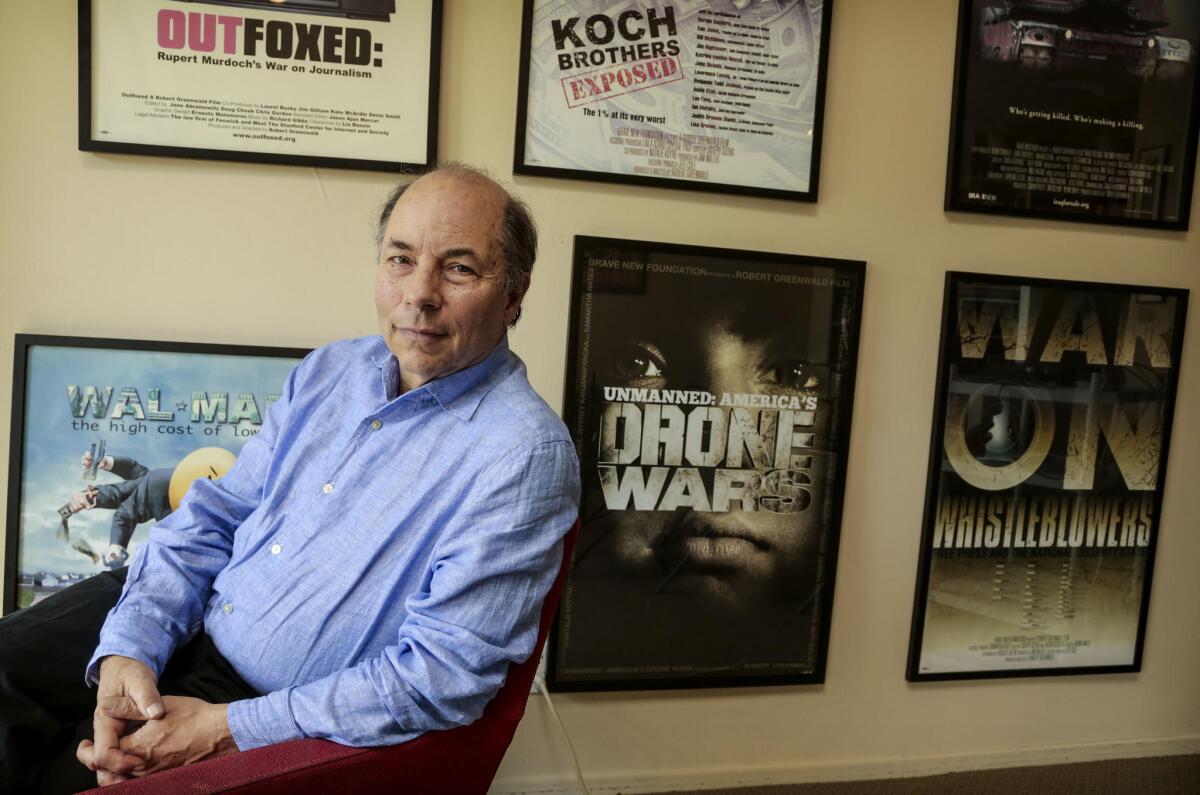
Robert Greenwald, an independent documentary filmmaker and president of Brave New Films, praised the academy’s announcement but noted that more steps toward diversity need to occur in the hiring process.
“I appreciate the academy being open and transparent. With such a deep deficit, there of course is a long way to go for the academy to look like the rest of the United States. Glad to see them taking the important initial steps. But of course the real systemic problem is in making the hiring more diverse, so that there are more and more candidates for the academy to consider. And I hope the press and others will focus on the diversity in the hiring.
“I have personal experience. Brave New Films has a fellows program ... with focus on women and men of color. First year, we had 551 applications for five spots. So the talent and desire is there. We must open up the hiring process.”
- Share via
‘I am sitting here weeping,’ academy member says on this year’s class
Academy member Laura Karpman calls the motion picture academy’s new membership class a “sea change” for the institution.
“I am sitting here weeping,” Karpman, a composer and member of the music branch, says. “I am so moved by this. For the music branch in particular, it is a historic day.”
Prior to today’s invitees, music branch membership was 93% white and 92% male, according to a 2016 Times analysis. The branch invited 26 new members: 12 of them women, 10 people of color.
“It shows the tremendous will of a lot of people to be more inclusive,” says Karpman, who served on the music branch’s membership committee tasked to find new members this year. “It indicates that people do want change. They’re voting for it. They’re voting in members who have the credits and deserve the honor.”
The rush that comes from that recognition is fresh for Karpman, who became a member last year and is currently running for a governor spot in the music branch.
“You have to understand what it means to us to be a part of this body,” Karpman says. “It makes you feel complete. My heart is with all those people who never thought they were part of the community and now they are.”
- Share via
Rupert Murdoch’s sons get their academy invite
Rupert Murdoch’s sons -- James and Lachlan Murdoch -- were among 31 people invited to the academy in the executive category.
James Murdoch’s invitation comes after he was elevated last year to chief executive of 21st Century Fox, which owns the Fox movie studio. The Fox film studio is in the process of a major leadership change as the younger generation of Murdochs endeavors to put its imprint on the media company that famous father Rupert built over the last five decades. His older brother, Lachlan Murdoch, serves as executive chairman of 21st Century Fox, a title that he shares with his father. Lachlan primarily works out of Fox’s West Coast headquarters in Century City, and is getting increasingly involved in TV and movie production. James Murdoch is based at the company’s corporate headquarters in New York.
Other invitees in the executive category include: AMC Networks Chief Executive Officer Josh Sapan, longtime Sony Pictures executive Adrian Smith, Imagine Entertainment executive Erica Huggins, Fox Searchlight executive Anikah Elizabeth McLaren, Village Roadshow Pictures executive Bonni Lee and billionaire Gigi Pritzker (“Enders Game” and “The Way, Way Back”), the chief executive of Oddlot Entertainment.
- Share via
Look at the jump in women and nonwhites invited to this year’s academy class
- Share via
Ava DuVernay responds to new academy invitees
I’m proud of the effort. It was intentional. It was intense. It was inclusive. And it was imperative. The Academy is heading in the right direction on a long road. A good start.
— Ava Duvernay
- Share via
And the new invitees are...
Brie Larson, John Boyega, America Ferrara, Michael B. Jordan and Chadwick Boseman were among 683 new members invited to join the Academy of Motion Picture Arts and Sciences today in what the nearly 90-year-old organization touted as its largest and most diverse new class ever.
The group represents the latest and most dramatic sign of the academy leadership’s effort to diversify the historically overwhelmingly white and male institution, an effort that took on heightened urgency this year in the #OscarsSoWhite uproar that reached a fever pitch in the run-up to this year’s awards telecast.
This year’s class is more than double the number invited in 2015, when the academy brought 322 members into its ranks.
- Share via
The Academy Class of 2016 breakdown: 46% female, 41% people of color
The Academy of Motion Picture Arts and Sciences announced the 683 new members invited Wednesday to join its ranks. Here is a breakdown of the demographics of this new class.
— Forty-six percent of the new members are female, pushing the overall breakdown of female members in the academy from 25% to 27%.
— Forty-one percent of the new members are people of color, bringing the previous 8% total to 11% people of color overall.
— There are 283 new international members representing 59 countries.
— Twenty-eight Oscar winners are among the 98 Oscar nominees included in the new class.
- Share via
#OscarsSoWhite change looks bleak
- Share via
Advocates behind #OscarsSoWhite talk about their plans to keep fighting for change
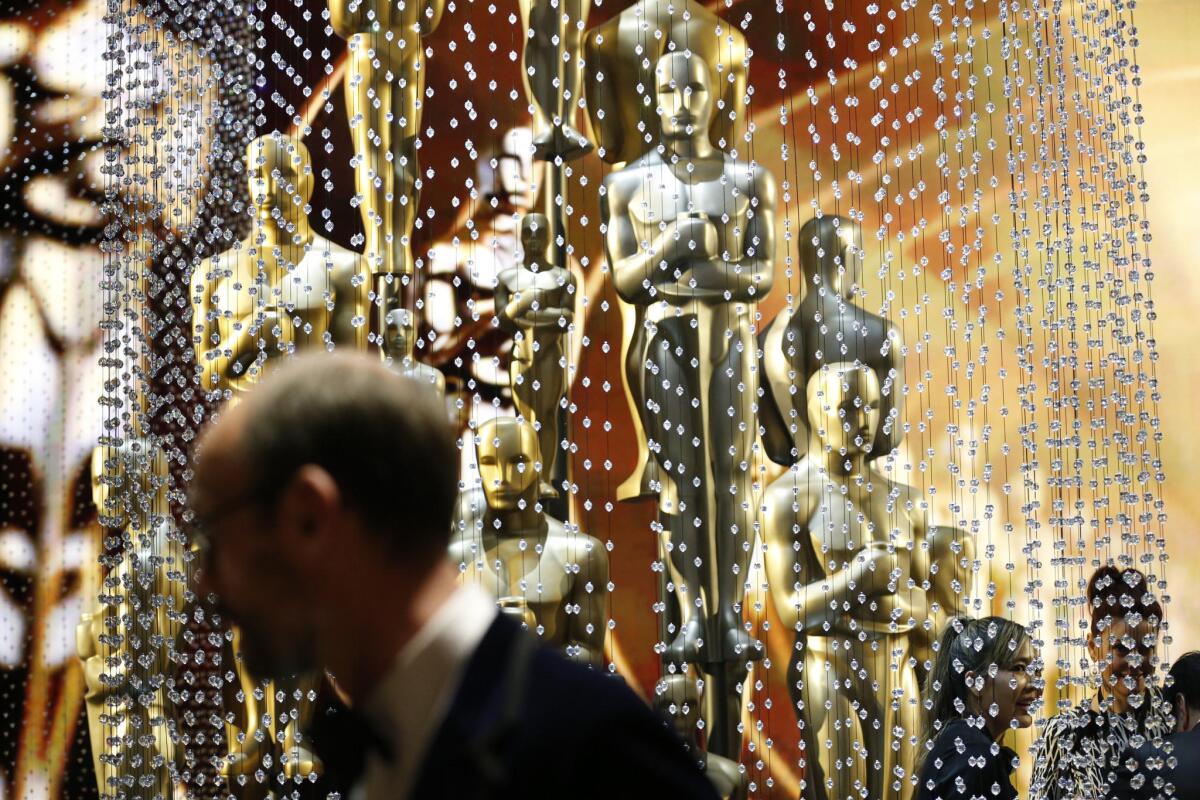
Here are the ways that OscarsSoWhite hashtag creator April Reign, USC professor Todd Boyd and others keep pushing for greater diversity in Hollywood during awards season and beyond.
- Share via
91% white. 76% male. Changing who votes on the Oscars won’t be easy
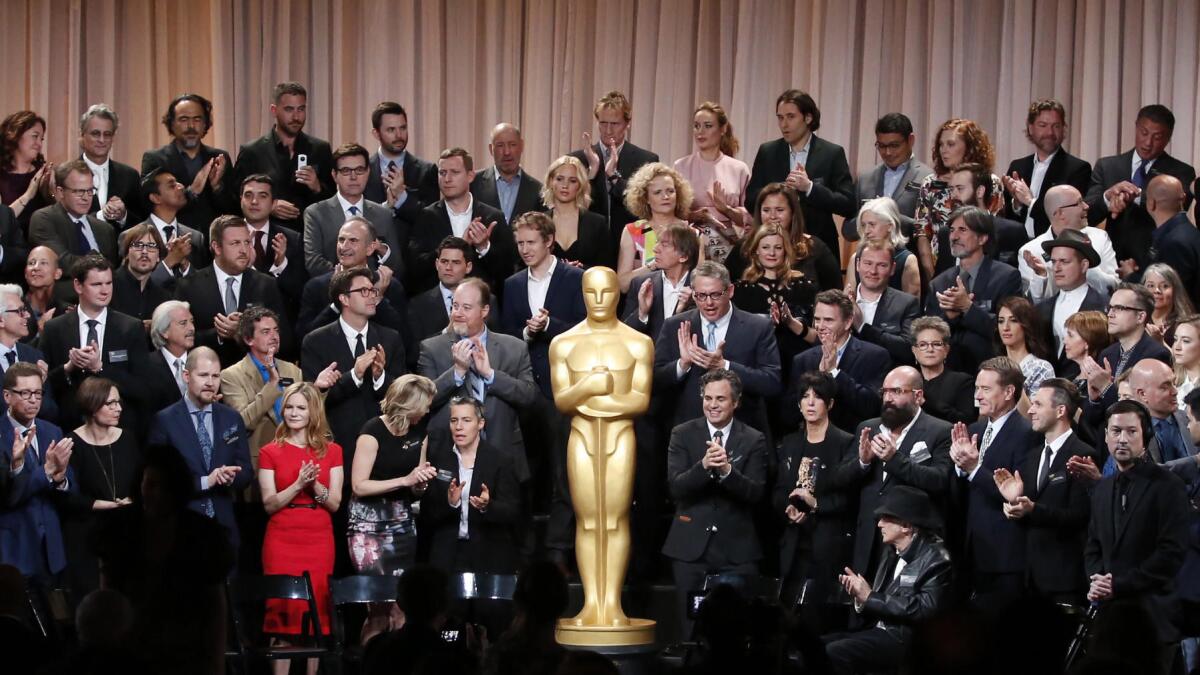
Under fire for nominating an all-white slate of actors for two years in a row, the academy vowed to double the number of women and minority members by 2020. It also adopted controversial new rules that will allow it to take away voting rights from inactive members.
A Los Angeles Times study shows just how much work the academy has to do if it intends to reflect the audience it serves — and just how aggressive the group’s new goals are.
In 2012, The Times reported that Oscar voters were 94% white and 77% male. Four years later, the academy has made scant progress: Oscar voters are 91% white and 76% male, according to a new Times study.
Read More--Rebecca Keegan, Sandra Poindexter and Glenn Whipp
- Share via
In Hollywood, diversity tends to ignore the disabled
Diversity has been the talk of Hollywood, but for the most part, the conversation has centered mostly on race and gender. Some have brought in issues of sexuality, but many feel the discussion should expand to include the disabled.
- Share via
Cheryl Boone Isaacs on creating a more diverse academy: ‘We’re going to make it happen’
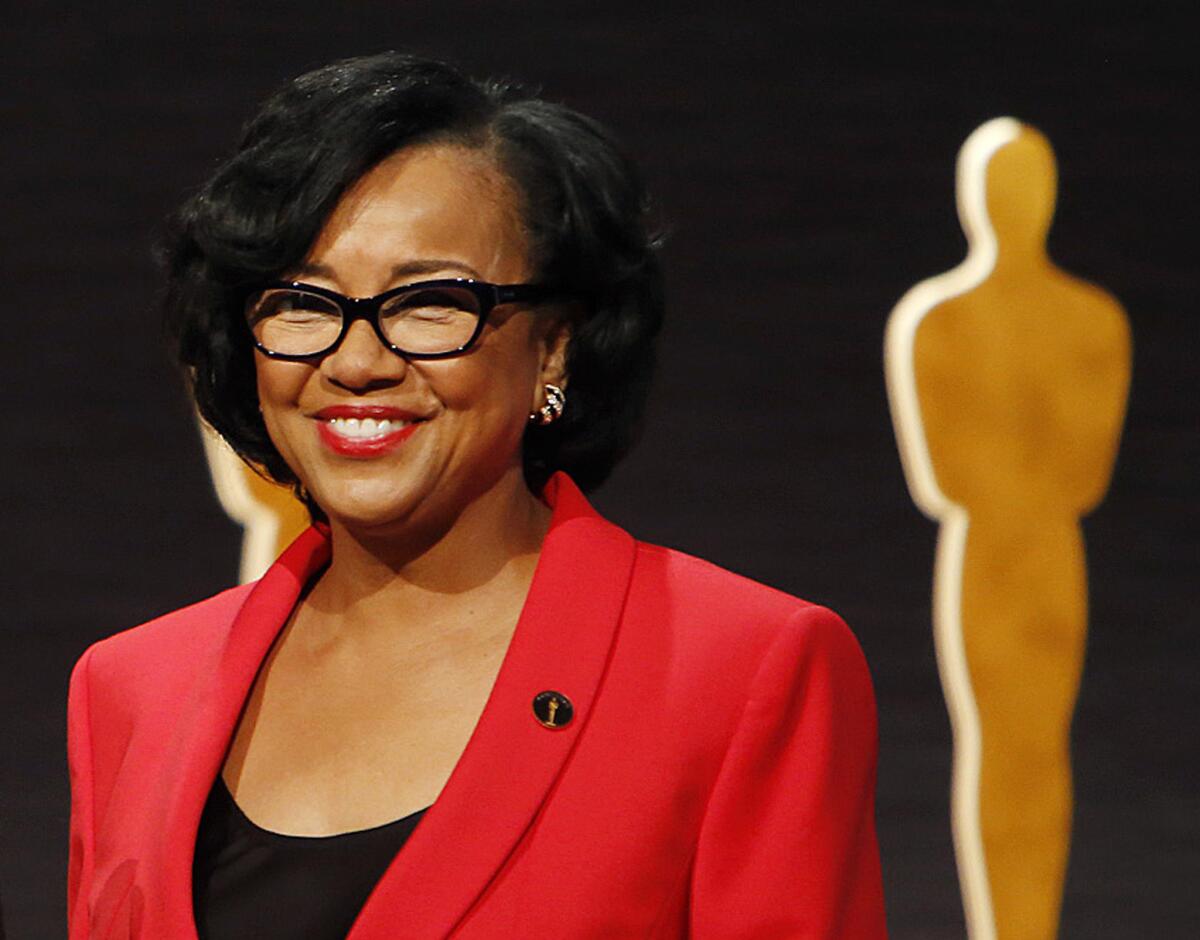
Four days before the 2016 Oscars, Academy of Motion Picture Arts and Sciences President Cheryl Boone Isaacs spoke with The Times about the academy’s ambitious goals for diversifying its membership, its controversial plan to take away voting rights from some members and her personal experience during this unusual awards season.
There are qualified people out there. Our goal is to make sure that we are active in bringing in different voices regardless of gender, race or sexual orientation.
— Cheryl Boone Isaacs, Academy of Motion Picture Arts and Sciences president
- Share via
Oscar’s exclusive club is about to get bigger and more diverse: What you need to know
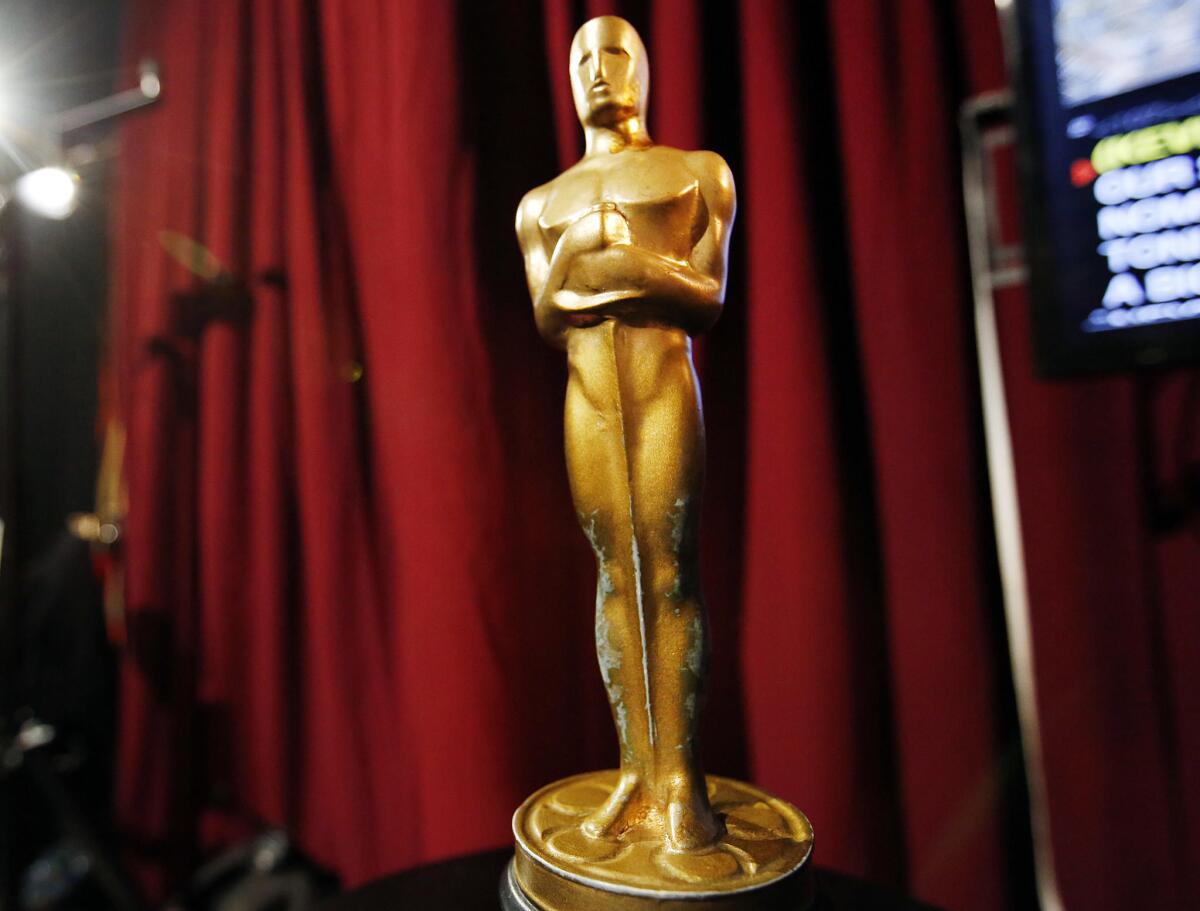
One of the most exclusive clubs in the world is about to get a little bit – or perhaps more than a little bit – bigger.
On Wednesday, the Academy of Motion Picture Arts and Sciences is expected to announce its newest class of members, the first round of invitees to join the nearly 90-year-old organization since the #OscarsSoWhite controversy reached a crescendo at this year’s awards ceremony.
Here are five things you need to know:
- Share via
Here are 100 people in Hollywood who could help fix the academy’s diversity problem
Hollywood has struggled over the years to find enough diversity candidates for the Academy of Motion Picture Arts and Sciences. Earlier this year, we embarked on a search to help out.
Here are the 100 names we offered to academy leaders for their consideration.
- Share via
Who should the film academy add to address its diversity problem? Here are 12 picks from our readers
Knowing that we too might have overlooked people on our list of 100 people in Hollywood who could help fix the film academy’s diversity problem, we asked readers to submit their suggestions for academy membership. While many submissions included people who are already constituents -- such as directors Carl Franklin and Ava DuVernay or actresses Marlee Matlin and Shohreh Aghdashloo -- others are perfect examples of people of diverse backgrounds the academy, and broader Hollywood, should be paying attention to.
Here are 12 of the readers’ suggestions:
- Share via
How Richard Pryor and Eddie Murphy used the Oscars as a platform for diversity before #OscarsSoWhite
At the 49th Academy Awards held in 1977, 39 years ago, Richard Pryor (after a seven-minute interpretive song-and-dance number by Ann-Margret) opened the Oscars with a searing monologue that lampooned the lack of African American representation at the awards while a primarily white audience nervously tittered.
- Share via
It’s time for Hollywood to stop defining great drama as white men battling adversity
Just two years after the much-touted breakthrough of “12 Years a Slave,” the best picture nominees for 2016, with a few notable exceptions, followed a dishearteningly repetitive story line of white men triumphing over enormous odds: The Hollywood blacklist (“Trumbo”), the vagaries of Wall Street (“The Big Short”), Cold War politics (“Bridge of Spies”), life alone on Mars (“The Martian”), a grizzly bear attack, murderous companions and the hostilities of a cruel winter landscape (“The Revenant”).
To be clear, these are all good stories, powerful, well told and beautifully acted. But in world filled with billions of people who are not white men, they are certainly not the only good stories, not by a long shot.
- Share via
Why the #OscarsSoWhite fuss matters
After years of fighting dwindling TV ratings and patchy box office to prove their relevance, the people behind the Oscars ceremony had relevance thrust upon them.
Announced at a time already roiling with issues surrounding race and gender, the overwhelmingly white and male nominee lists for this year’s awards ceremony sparked criticism, controversy, a potential boycott and an apologetic response from the Academy of Motion Picture Arts and Sciences. Nor should we be surprised that the criticism, controversy, boycott threat and response have sparked a backlash just as heated.